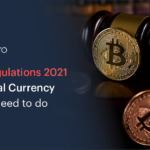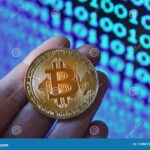The Environmental Impact of Bitcoin Mining: Is There a Solution? This question looms large as the world increasingly grapples with the ecological consequences of cryptocurrency operations. Bitcoin mining, a process requiring vast amounts of energy, raises concerns about carbon footprints and sustainability. As the popularity of digital currencies continues to surge, understanding the environmental implications becomes crucial for both investors and policymakers alike.

This discussion will delve into the intricacies of Bitcoin mining, exploring its energy demands, the carbon emissions associated with it, and the urgent need for sustainable practices. Various potential solutions will also be examined, shedding light on innovative approaches to mitigate the environmental impact while still embracing the technological advancements that cryptocurrencies offer.
In today’s fast-paced world, the significance of effective communication cannot be overstated. Whether in personal relationships, professional settings, or social interactions, how we convey our thoughts and feelings plays a crucial role in building connections and understanding. In this article, we will explore the various facets of communication, its importance, and some strategies to enhance our communication skills.Communication is the cornerstone of human interaction.
It is the process through which we share information, express emotions, and foster relationships. The ability to communicate effectively can lead to better understanding and cooperation among individuals and groups. On the other hand, poor communication can create misunderstandings, conflicts, and a breakdown in relationships.There are several forms of communication, including verbal, non-verbal, written, and visual. Verbal communication involves the use of spoken words to convey a message.
It can occur in various settings, such as one-on-one conversations, group discussions, or public speaking. The tone of voice, pitch, and pace can significantly impact how the message is received. For instance, a calm and steady tone can convey confidence and authority, while a hurried or shaky voice may indicate nervousness or uncertainty.Non-verbal communication, on the other hand, includes body language, facial expressions, gestures, and eye contact.
These elements can often communicate more than words themselves. For example, maintaining eye contact can show attentiveness and sincerity, while crossed arms may signal defensiveness or discomfort. Understanding and interpreting non-verbal cues can enhance our ability to connect with others and convey our intentions accurately.Written communication encompasses emails, texts, letters, and reports. In an age dominated by digital communication, the ability to write clearly and concisely is more critical than ever.
Good writing involves not only proper grammar and punctuation but also the ability to organize thoughts logically and engage the reader. With the rise of social media, the nuances of written communication have evolved, requiring individuals to adapt their styles to fit various platforms and audiences.Visual communication, which includes images, videos, and infographics, has gained popularity in recent years. It is a powerful tool that can help to clarify complex information and engage audiences.
In a world where attention spans are decreasing, using visuals can enhance understanding and retention of information.The importance of effective communication extends beyond everyday interactions. In the workplace, clear communication is vital for collaboration, productivity, and overall success. It enables teams to work efficiently, minimizes errors, and fosters a positive work environment. Employers value employees who can articulate their ideas and provide feedback constructively.
Furthermore, good communication skills are essential for career advancement, as they demonstrate professionalism and the ability to lead.Despite its significance, many people struggle with communication. One common barrier is the fear of public speaking. Many individuals experience anxiety when speaking in front of a group, which can hinder their ability to express themselves effectively. To overcome this fear, practice is key.
Engaging in small group discussions or joining public speaking clubs, such as Toastmasters, can build confidence and improve speaking skills over time.Another barrier to effective communication is cultural differences. As our world becomes increasingly interconnected, individuals from diverse backgrounds interact more frequently. Understanding cultural nuances and being sensitive to different communication styles can enhance interactions and prevent misunderstandings. This includes being aware of varying norms surrounding eye contact, gestures, and even the use of silence, which may hold different meanings in different cultures.Active listening is a fundamental component of effective communication.
It involves fully concentrating on the speaker, understanding their message, responding thoughtfully, and retaining the information. Many people fall into the trap of merely waiting for their turn to speak rather than truly listening. To improve listening skills, one can practice reflecting back what they have heard, asking clarifying questions, and avoiding distractions during conversations.Empathy is another essential aspect of communication.
Being empathetic means putting oneself in another person’s shoes and understanding their feelings and perspectives. This quality fosters deeper connections and allows for more meaningful interactions. Demonstrating empathy can involve validating the other person’s feelings, acknowledging their experiences, and responding with compassion.To enhance communication skills, it is also beneficial to seek feedback from others. Constructive criticism can provide insights into areas for improvement.
Additionally, observing effective communicators can offer valuable lessons. Analyzing their techniques, such as how they structure their messages or engage their audiences, can help individuals develop their own communication styles.In a professional context, effective communication can lead to better teamwork, leadership, and conflict resolution. Team members who communicate openly and honestly are more likely to collaborate successfully and achieve common goals.
Furthermore, leaders who communicate their vision clearly can inspire and motivate their teams, creating a sense of purpose and direction.In conclusion, effective communication is a vital skill that has a profound impact on our personal and professional lives. By understanding the various forms of communication and actively working to improve our skills, we can foster stronger relationships, enhance our careers, and contribute positively to our communities.
Remember, communication is not just about speaking; it is an ongoing process that involves listening, understanding, and connecting with others. So, let’s make a conscious effort to improve our communication skills and create a more connected world.



